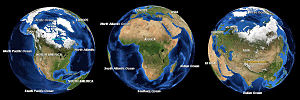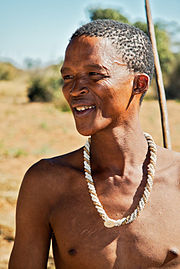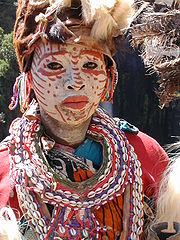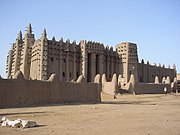Africa Hotel - Book Travel
Africa hotels and resorts provide a wide variety of accommodations to meet your needs. Book your air, hotel, rental car and activities with our online travel booking engine. With more than 50 countries to consider, making a decision about where to go on vacation or business in Africa can be your biggest task. Africa is incredibly diverse and you can experience different cultures, languages, fauna, flora and topography in every individual country.
Figuring out what you would like to see and do while on holiday in Africa is probably the best way to decide where to go. This is especially helpful if your time in Africa is limited to one or two weeks. If you have a month or more to spend in Africa then it is probably best to consider an Overland Tour so you get to experience several countries and get more of a taste of the 'real' Africa.
Table Mountain Cape Town South Africa
Hotels and Resorts in Africa
- Canary Islands
- Ceuta
- Madeira Islands
- Mayotte
- Melilla
- Reunion
- Saint Helena
- South African Airways (SAA) (Johannesburg, South Africa), is by far Africa's premier airline and has daily flights to most major African political and economic hubs. If you're flying from the Northern Hemisphere to somewhere north of South Africa, don't forget to check how much backtracking you'll have to do, and if it's worth it. The flight from New York does stop in Senegal, but if you get off there, SAA has no connections to anywhere else.
- Ethiopian Airlines (Addis Ababa, Ethiopia), offers a direct service from many European cities & Washington Dulles Airport in USA to its hub Addis Ababa. From there it has a very good coverage to many cities in Africa. Its mileage can be used on Lufthansa services & Lufthansa miles can also be used on Ethiopian.
- Kenya Airways (Nairobi, Kenya), partly owned by Royal Dutch KLM, offers good service and frequent flights to all East African countries and many other major African destinations.
- Air France has flights to most West African capitals.
- Many other African carriers offer flights to more remote locations.
- Airlines in your home country may offer some flights to Africa with less backtracking. For example, there are flights to Ghana on Delta from New York, and several European airlines fly there also.
Africa
Africa, the second largest continent, has 54 countries - the most on any continent, and a surface area of 30,244,050 sq km (11,677,293 sq mi). Its highest point is Tanzania's Mt. Kilimanjaro, the world's highest free-standing mountain, which rises to 5,895 m (19,340 feet) above sea level. Africa's lowest point is Djibouti's Lake Assal, whose surface is 157 m (515 feet) below sea level. Africa has extensive mineral resources, including gold, diamonds and copper. Its longest river, the Nile, is also the World's longest, and runs 6,650 km (4,132 miles) from Burundi to Egypt. Its largest lake is the 69,485 sq km (26,828 square mile) Lake Victoria, which is surrounded by Uganda, Tanzania, and Kenya. Africa is bounded by the Mediterranean Sea to the north, by the Atlantic Ocean to the west, by the Red Sea to the northeast, and by the Indian Ocean to the southeast.
Africa Regions
Regions of Africa
North Africa (Algeria, Egypt, Libya, Morocco, Tunisia, Western Sahara) |
Saharan Africa (Chad, Mali, Mauritania, Niger, Sudan) |
West Africa (Benin, Burkina Faso, Cameroon, Cape Verde, Cote d'Ivoire, Gambia, Ghana, Guinea, Guinea-Bissau, Liberia, Nigeria, Senegal, Sierra Leone, Togo) |
Central Africa (Angola, Burundi, Central African Republic, Republic of the Congo, Democratic Republic of the Congo, Equatorial Guinea, Gabon, Rwanda, Sao Tome and Principe, Zambia) |
East Africa (Comoros, Djibouti, Eritrea, Ethiopia, Kenya, Madagascar, Malawi, Mauritius, Mozambique, Seychelles, Somalia, Tanzania, Uganda) |
Southern Africa (Botswana, Lesotho, Namibia, South Africa, Swaziland, Zimbabwe) |
Other territories
Africa By plane
Air fares to Africa can be very expensive, but there are ways to save. Don't, for example, fly from London to a former French colony, or conversely from Paris to a former British colony. That could easily cost thousands more. Instead, get a cheap ticket from London to Paris (or vice versa) and fly to Africa from there. Always book the Africa portion of travel first, be sure to allow lots of connection time, and note that London and Paris both have multiple international airports.
From the USA, there are a few non-stop flights to Africa from JFK New York City, Dulles near Washington, D.C. and Atlanta. Outside the peak travel times to Europe (e.g. summer) you might be able to get a good deal to London or Paris and book a fare from there to Africa on a European travel web site. But don't book the USA to Europe portion until you get confirmed on the Europe to Africa portion first. Through fares to Africa from the USA can be quite expensive, so avoiding peak travel times to Europe can sometimes save a lot. However, since new non-stop flights to Africa have recently been added, and Europe is much more expensive than it used to be, try getting a direct quote first, then see if you can do better.
Airline consolidators can also be used for discounted air fares. If you have additional travel time, check to see how your total fare quote to Africa compares with a round-the-world fare. Don't forget to add in the extra costs of additional visas, departure taxes, ground transportation, etc. for all those places outside of Africa.
See the individual articles (links above) for more country-specific information. Bear in mind that many African countries only offer a few international flights each day, or in some cases, each week. While it isn't hard to reach South Africa or Egypt, getting to Malawi or Togo can be quite a challenge.
Get Around Africa
Africa By plane
There are a number of reliable airlines that ply the African Continent. Chief among them are certainly:
Note: Choose wisely when flying in Africa. Although the airlines mentioned above all meet FAA safety standards, the same isn't true for all airlines, especially smaller domestic carriers in countries where political stability may be lacking, tenuous or only recently reintroduced. Click on this link for the list of airlines that do not meet EU safety standards.
Africa By Car
If you want to drive your own car around Africa see also Carnet de Passage
For sightseeing trips, it may be less expensive to hire a taxi than to rent a car, but be sure to negotiate taxi fares beforehand. Travel on rural roads can be slow and difficult in the dry season and disrupted by floods in the rainy season. If you plan on traveling in rural areas of sub-Saharan Africa, avoid the rainy months of May through October above the equator and the rainy months of November through April below the equator. Some roads may be flooded or washed out during these months.
Travel by car outside large towns can be dangerous. Major roads are generally well maintained but there are few divided highways in Africa. In addition, rural auto accidents are fairly common because of high speed limits and the presence of wildlife in these areas. Night driving, especially in rural areas, is not recommended, and visitors are encouraged to hire reputable tour operators for safaris or other game viewing expeditions.
African Safari tourism to African National Parks.
Amboseli National Park is located in Kenya and famous for the biggest tuskers in the world
Kgalagadi Transfrontier Park is located in South Africa and Botswana. Big game and many raptors
Masai Mara National Park is located in Kenya and is famous for the mass migration of wildebeest from the Serengeti
Tsavo East National Park is located in Kenya and is best known for its giraffe population
Serengeti National Park is located in Tanzania and has amazing opportunities for seeing lions
Etosha National Park is located in Namibia
Kruger National Park in South Africa is the biggest national park in Africa and has many different habitats
Volcanoes National Park in Rwanda home of the rare mountain gorilla - and the rich mosaic of mountain ecosystems
Stay safe
Africa can certainly be a dangerous continent. Check the "stay safe" areas of the individual countries you are going to.
Africa Geography
A composite satellite image of Africa (centre) with North America (left) and Eurasia (right) to scale
Africa is the largest of the three great southward projections from the largest landmass of the Earth. Separated from Europe by the Mediterranean Sea, it is joined to Asia at its northeast extremity by the Isthmus of Suez (transected by the Suez Canal), 163 km (101 miles) wide. (Geopolitical, Egypt's Sinai Peninsula east of the Suez Canal is often considered part of Africa, as well.) From the most northerly point, Ras ben Sakka in Tunisia (37°21' N), to the most southerly point, Cape Agulhas in South Africa (34°51'15" S), is a distance of approximately 8,000 km (5,000 miles); from Cape Verde, 17°33'22" W, the westernmost point, to Ras Hafun in Somalia, 51°27'52" E, the most easterly projection, is a distance of approximately 7,400 km (4,600 miles). The coastline is 26,000 km (16,100 miles) long, and the absence of deep indentations of the shore is illustrated by the fact that Europe, which covers only 10,400,000 km² (4,010,000 square miles) – about a third of the surface of Africa – has a coastline of 32,000 km (19,800 miles).[
According to the ancient Romans, Africa lay to the west of Egypt, while "Asia" was used to refer to Anatolia and lands to the east. A definite line was drawn between the two continents by the geographer Ptolemy (85–165 AD), indicating Alexandria along the Prime Meridian and making the isthmus of Suez and the Red Sea the boundary between Asia and Africa. As Europeans came to understand the real extent of the continent, the idea of Africa expanded with their knowledge.
Geologically, Africa includes the Arabian Peninsula; the Zagros Mountains of Iran and the Anatolian Plateau of Turkey mark where the African Plate collided with Eurasia. The Afrotropic eco zone and the Saharo-Arabian desert to its north unite the region biogeographically, and the Afro-Asiatic language family unites the north linguistically.
Climate
The climate of Africa ranges from tropical to sub arctic on its highest peaks. Its northern half is primarily desert or arid, while its central and southern areas contain both savanna plains and very dense jungle (rainforest) regions. In between, there is a convergence where vegetation patterns such as sahel, and steppe dominate.
Fauna
boasts perhaps the world's largest combination of density and "range of freedom" of wild animal populations and diversity, with wild populations of large carnivores (such as lions, hyenas, and cheetahs) and herbivores (such as buffalo, deer, elephants, camels, and giraffes) ranging freely on primarily open non-private plains. It is also home to a variety of jungle creatures (including snakes and primates) and aquatic life(including crocodiles and amphibians).
Ecology
Africa is suffering deforestation at twice the world rate, according to the United Nations Environment Program me (UNEP). Some sources claim that deforestation has already wiped out roughly 90% of West Africa's original forests. Since the arrival of humans 2000 years ago, Madagascar has lost more than 90% of its original forest. About 65% of Africa's agricultural land suffers from soil degradation.
Economy
Although it has abundant natural resources, Africa remains the world's poorest and most underdeveloped continent, due to a variety of causes that may include the spread of deadly diseases and viruses (notably HIV/AIDS and malaria), corrupt governments that have often committed serious human rights violations, failed central planning, high levels of illiteracy, lack of access to foreign capital, and frequent tribal and military conflict (ranging from guerrilla warfare to genocide). According to the United Nations' Human Development Report in 2003, the bottom 25 ranked nations (151st to 175th) were all African.
Poverty, illiteracy, malnutrition and inadequate water supply and sanitation, as well as poor health, affect a large proportion of the people who reside in the African continent. In August 2008, the World Bank announced revised global poverty estimates based on a new international poverty line of $1.25 per day (versus the previous measure of $1.00). 80.5% of the Sub-Saharan Africa population was living on less than $2.50 (PPP) a day in 2005, compared with 85.7% for India. The new figures confirm that sub-Saharan Africa has been the least successful region of the world in reducing poverty ($1.25 per day); some 50% of the population living in poverty in 1981 (200 million people), a figure that rose to 58% in 1996 before dropping to 50% in 2005 (380 million people). The average poor person in sub-Saharan Africa is estimated to live on only 70 cents per day, and was poorer in 2003 than he or she was in 1973 indicating increasing poverty in some areas. Some of it is attributed to unsuccessful economic liberalization programs spearheaded by foreign companies and governments, but other studies and reports have cited bad domestic government policies more than external factors.
From 1995 to 2005, Africa's rate of economic growth increased, averaging 5% in 2005. Some countries experienced still higher growth rates, notably Angola, Sudan and Equatorial Guinea, all three of which had recently begun extracting their petroleum reserves or had expanded their oil extraction capacity. In recent years, the People's Republic of China has built increasingly stronger ties with African nations. In 2007, Chinese companies invested a total of US$1 billion in Africa
Demographics
Africa's population has rapidly increased over the last 40 years, and consequently it is relatively young. In some African states half or more of the population is under 25 years of age. African population grew from 221 million in 1950 to 1 billion in 2009.
Speakers of Bantu languages (part of the Niger-Congo family) are the majority in southern, central and East Africa proper. But there are also several Nilotic groups in East Africa, and a few remaining indigenous Khoisan ('San' or 'Bushmen') and Pygmy peoples in southern and central Africa, respectively. Bantu-speaking Africans also predominate in Gabon and Equatorial Guinea, and are found in parts of southern Cameroon. In the Kalahari Desert of Southern Africa, the distinct people known as the Bushmen (also "San", closely related to, but distinct from "Hottentots") have long been present. The San are physically distinct from other Africans and are the indigenous people of southern Africa. Pygmies are the pre-Bantu indigenous peoples of central Africa.
The peoples of North Africa comprise two main groups; Berber and Arabic-speaking peoples in the west, and Egyptians in the east. The Arabs who arrived in the seventh century introduced the Arabic language and Islam to North Africa
. The Semitic Phoenicians, the Iranian Alans, the European Greeks, Romans and Vandals settled in North Africa as well. Berbers still make up the majority in Morocco, while they are a significant minority within Algeria. They are also present in Tunisia and Libya. The Tuareg and other often-nomadic peoples are the principal inhabitants of the Saharan interior of North Africa. Nubians are a Nil o-Saharan-speaking group (though many also speak Arabic), who developed an ancient civilization in northeast Africa.
Some Ethiopian and Eritrea groups (like the Amhara and Tigrayans, collectively known as "Habesha") speak Semitic languages. The Oromo and Somali peoples speak Cushitic languages, but some Somali clans trace their founding to legendary Arab founders. Sudan and Mauritania are divided between a mostly Arabized north and a native African south (although the "Arabs" of Sudan clearly have a predominantly native African ancestry themselves). Some areas of East Africa, particularly the island of Zanzibar and the Kenyan island of Lamu, received Arab Muslim and Southwest Asian settlers and merchants throughout the Middle Ages and in antiquity.
Prior to the decolonisation movements of the post-World War II era, Whites were represented in every part of Africa. Decolonisation during the 1960s and 1970s often resulted in the mass emigration of European-descended settlers out of Africa – especially from Algeria (pies-noirs),Kenya, Congo, Angola, Mozambique and Rhodesia. Nevertheless, White Africans remain an important minority in many African states. The African country with the largest White African population is South Africa. The Afrikaners, the Anglo-Africans and the Coloreds are the largest European-descended groups in Africa today
European colonization also brought sizeable groups of Asians, particularly people from the Indian subcontinent, to British colonies. Large Indian communities are found in South Africa, and smaller ones are present in Kenya, Tanzania, and some other southern and East African countries. The large Indian community in Uganda was expelled by the dictator Idi Amin in 1972, though many have since returned. The islands in the Indian Ocean are also populated primarily by people of Asian origin, often mixed with Africans and Europeans. The Malagasy people of Madagascar are an Australasian people, but those along the coast are generally mixed with Bantu, Arab, Indian and European origins. Malay and Indian ancestries are also important components in the group of people known in South Africa as Cape Coloreds (people with origins in two or more races and continents). During the 20th century, small but economically important communities of Lebanese and Chinese have also developed in the larger coastal cities of West and East Africa, respectively.
Languages
Map showing the distribution of the various language families of Africa.
By most estimates, well over a thousand languages (UNESCO has estimated around two thousand) are spoken in Africa. Most are of African origin, though some are of European or Asian origin. Africa is the most multilingual continent in the world, and it is not rare for individuals to fluently speak not only multiple African languages, but one or more European ones as well. There are four major language families indigenous to Africa.
The Afro-Asiatic languages are a language family of about 240 languages and 285 million people widespread throughout the Horn of Africa, North Africa, the Sahel, and Southwest Asia.
The Nilo-Saharan language family consists of more than a hundred languages spoken by 30 million people. Nilo-Saharan languages are spoken by Nilotic tribes in Chad, Ethiopia, Kenya, Sudan, Uganda, and northern Tanzania.
The Niger-Congo language family covers much of Sub-Saharan Africa and is probably the largest language family in the world in terms of different languages.
The Khoisan languages number about fifty and are spoken in Southern Africa by approximately 120,000 people. Many of the Khoisan languages are endangered. The Khoi and San peoples are considered the original inhabitants of this part of Africa.
Following the end of colonialism, nearly all African countries adopted official languages that originated outside the continent, although several countries also granted legal recognition to indigenous languages (such as Swahili, Yoruba, Igbo and Hausa). In numerous countries, English and French (see African French) are used for communication in the public sphere such as government, commerce, education and the media. Arabic, Portuguese, Afrikaans and Malagasy are examples of languages that trace their origin to outside of Africa, and that are used by millions of Africans today, both in the public and private spheres.
Culture
Modern African culture is characterized by conflicted responses to Arab nationalism and European imperialism.[citation needed] Increasingly, beginning in the late 1990s, Africans have been reasserting their identity.[citation needed] In North Africa, especially because of the rejection of the label Arab or European, there is now an upsurge of demands for special protection of indigenous Berber languages and culture in Morocco, Egypt, Algeria and Tunisia.[citation needed] The re-emergence of Pan-Africanism since the fall of apartheid has heightened calls for a renewed sense of African identity.[citation needed] In South Africa, intellectuals from settler communities of European descent increasingly identify as African for cultural, rather than geographical or racial, reasons. Famously, some have undergone ritual ceremonies to become members of the Zulu or other communities.[citation needed]
Many aspects of traditional African cultures have become less practiced in recent years as a result of years of neglect and suppression by colonial and post-colonial regimes.[citation needed] There is now a resurgence in the attempts to rediscover and revalourise African traditional cultures, under such movements as the African Renaissance, led by Thabo Mbeki, Afro centrism, led by a group of scholars, including Molefi Asante, as well as the increasing recognition of traditional spiritualism through decriminalization of Vodou and other forms of spirituality. In recent years, traditional African culture has become synonymous with rural poverty and subsistence farming.[citation needed]
The vast majority of the scholarship on Africa was extraneous and catered to the demand for exotic and outlandish representations of Africa. The enforcement of government decrees and policies tended to produce effects that confirmed the prejudices of the European colonialists.
Visual art and architecture
African art and architecture reflect the diversity of African cultures. The oldest existing examples of art from Africa are 82,000-year-old beads made from Nassarius shells that were found in the Aterian levels at Grotte des Pigeons, Taforalt, Morocco.[citation needed] The Great Pyramid of Giza in Egypt was the world's tallest structure for 4,000 years, until the completion of Lincoln Cathedral around the year 1300. The stone ruins of Great Zimbabwe are also noteworthy for their architecture, and the complexity of monolithic churches at Lalibela, Ethiopia, of which the Church of St. George is representative.[citation needed]
Music and dance
Egypt has long been a cultural focus of the Arab world, while remembrance of the rhythms of sub-Saharan Africa, in particular West Africa, was transmitted through the Atlantic slave trade to modern samba, blues, jazz, reggae, rap, and rock and roll. The 1950s through the 1970s saw a conglomeration of these various styles with the popularization of Afro beat and High life music. Modern music of the continent includes the highly-complex choral singing of southern Africa and the dance rhythms of the musical genre of soukous, dominated by the music of the Democratic Republic of Congo. Indigenous musical and dance traditions of Africa are maintained by oral traditions, and they are distinct from the music and dance styles of North Africa and Southern Africa. Arab influences are visible in North African music and dance and, in Southern Africa, Western influences are apparent due tocolonisation.
General information
- African & Middle Eastern Reading Room from the United States Library of Congress
- Africa South of the Sahara from Stanford University
- The Index on Africa from The Norwegian Council for Africa
- Africa from The Columbia Gazetteer of the World Online
- Aluka Digital library of scholarly resources from and about Africa
- Atlas of Our Changing Environment: Africa from United Nations Environment Program
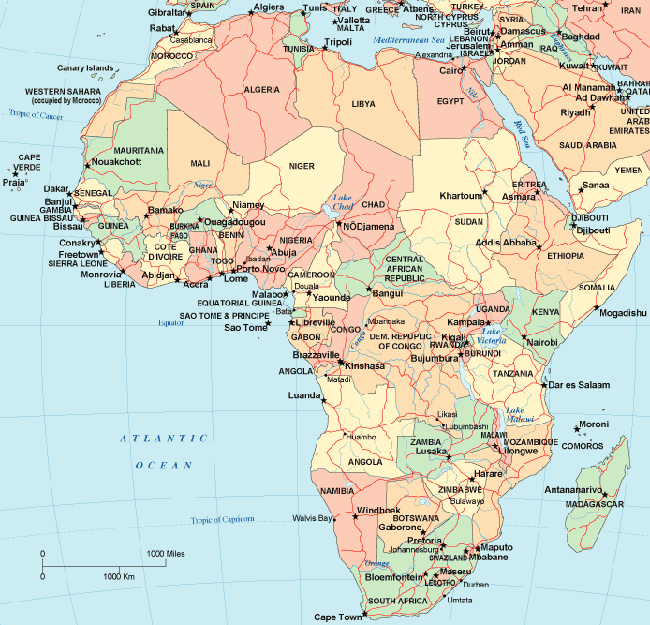


.jpg)

